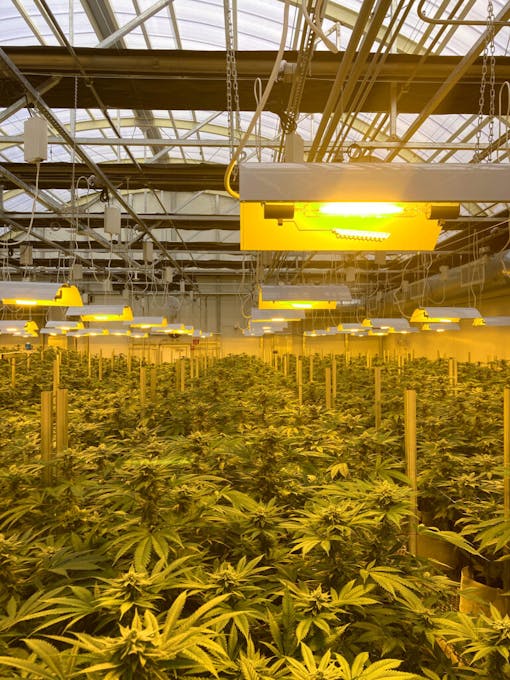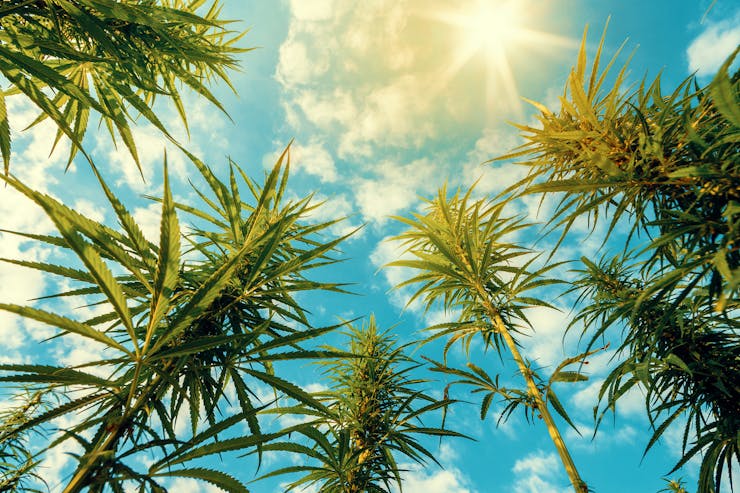Reviewing reasons why the cannabis industry can’t claim sustainability just yet.
Cannabis is one of the oldest domesticated crops, with humans growing it for thousands of years. The plant’s origins can be traced to the Tibetan Plateau as far back as the mid-Oligocene epoch.
The last ten-odd years have presented a drastic change in many people’s relationship with the plant, particularly after following roughly six decades of harsh consumption and growing penalities. And as legalization has begun to be commonplace, cannabis has become a commodity.
But like every industrialized product, corporations have been quick to seize opportunities, lay out market strategies, and grow cannabis products for profit – contrasting many of it’s purely medicinal, ceremonial, or utilitarian purposes.
Amidst the bustle of quickly expanding business, more states and nations are lessening their prohibition of cannabis and welcoming new consumers using tactics that don’t always keep sustainability at the forefront.
Though flooding the market with an abundance of cannabis products may seem like a net positive, it’s important to remember that the scale of larger weed grows require a significant expenditure of energy, making a case for more sustainable cannabis and a less wasteful industry.
Large-scale cannabis production and energy use

To be able to deliver enough cannabis to patients and consumers, many growth facilities operate round-the-clock, keeping lights, fans, air conditioners, and hydroponic systems running at all times of day.
According to the National Conference of State Legislatures, cannabis production represents 1 percent of the national electricity use, with top-producing regions like California consuming 3 percent of all the state’s electricity.
Compared to residential and business uses of electricity, cannabis cultivation facilities gobble up electricity at rates that are exponentially higher. In fact, Denver saw a 45% increase in energy electricity demand specifically related to marijuana cultivation.
To put this into perspective, an average household in Boulder county spends 630 kilowatt-hours per month, while a 5,000 sq ft facility in the same location will need 41,808 kilowatt-hours per month.
How the cannabis industry produces carbon

In an article by The Smithsonian, it was estimated that “producing a kilogram (2.2 pounds) of dried cannabis released the equivalent of between 2 to 5 tons of carbon dioxide into the atmosphere”—the equivalent of burning a full tank of gas.
On 4/20/2022 the Earth’s atmospheric carbon concentration will reach an average of 420 parts per million of CO2.
– Peter Deneen
The piece also mentions a study by Colorado State University in which researchers calculated that local cannabis grows produced 2.6 megatons of carbon dioxide, compared to the state’s coal mining industry, which produced 1.8 megatons of carbon dioxide.
“On 4/20/2022 the Earth’s atmospheric carbon concentration will reach an average of 420 parts per million of CO2”, says Peter Deneen, one of the organizers of 420PPM, an event taking place in Venice Beach where climate activists, scientists, regenerative farmers, content creators, and futurists will gather to discuss the future of cannabis cultivation.
“You have to trace back at least 3 million years since the last time our planet’s atmosphere had that much carbon content, a time when the oceans were 100 feet higher and humans had yet to evolve. This benchmark is nothing to celebrate—sort of like applauding another uptick of the needle in a garage with the engine running. But the 420 numeral holds a high place in cannabis culture.”
It’s a moment to rethink our place in the industry as consumers and cultivators. Cannabis has proven to be one of the most resilient and fastest-growing plants, needing only 20-30 inches of water to reach its yield point around 100 days after sown.
In our quest to benefit our bodies, many processes and capitalistic desires have turned the plant into something more harmful than beneficial for our planet.
Shop highly rated dispensaries near you
Showing you dispensaries nearWays to achieve a more sustainable weed industry

Ideally, small farmers and growers would be able to cultivate sun-grown and pesticide-free weed that respects the environment and helps nurture the soil’s microbiome.
This could help eliminate the use of chemical waste and pesticides that end up seeping into waterways, where an excessive amount of nitrogen, phosphorus, and potassium, to name a few, are leading to the eutrophication of our rivers, lakes, and ocean.
Growing more cannabis following a permaculture model could reap huge benefits.
A study conducted by the Centre for Natural Material Innovation at Cambridge has calculated that marijuana can capture atmospheric carbon twice as effectively as trees, absorbing between 8 to 15 tons of CO2 per hectare of cultivation (forests capture 2 to 6 tons of carbon per hectare).
Unlike timber, the cannabis plant doesn’t emit the captured carbon once cut. And besides converting greenhouse gases into biomass for the land, sustainable cannabis can be used to produce clean biodiesel, construction materials like hempcrete (replacing water-hungry concrete,) and biodegradable plastics – which haven’t had the neutralizing environmental impact many hoped.
Textiles, paper, and food (i.e. protein-rich hemp seeds) are a few other regenerative byproducts resulting from cannabis and options to explore more eco-friendly cannabis consumption.
Keeping up the fight for cannabis sustainability

The cannabis market in the USA could very well be worth $100bn by 2050 if it becomes legal at a federal level.
But as long as we let corporations treat the plant like a piece of merchandise (instead of considering it a sacred plant with several benefits,) the industry will continue to be a culprit in the greenhouse gas increase. Then, even the most happy-go-lucky cannabis consumers will have to share the impact on our planet.
Growing your own stash and supporting small-scale, organic farms might just be the solution to keep emissions low while we get high.





